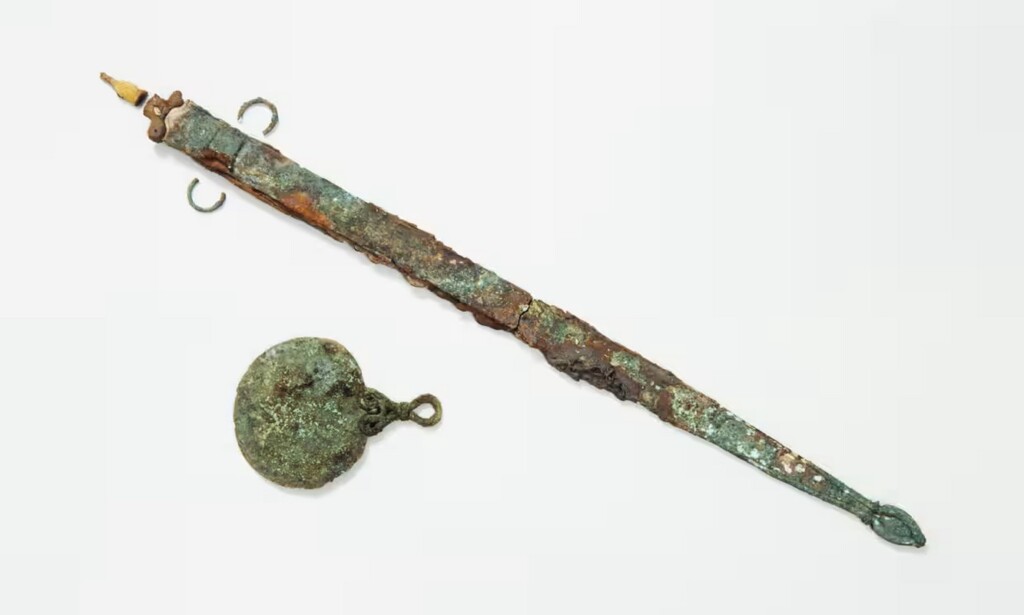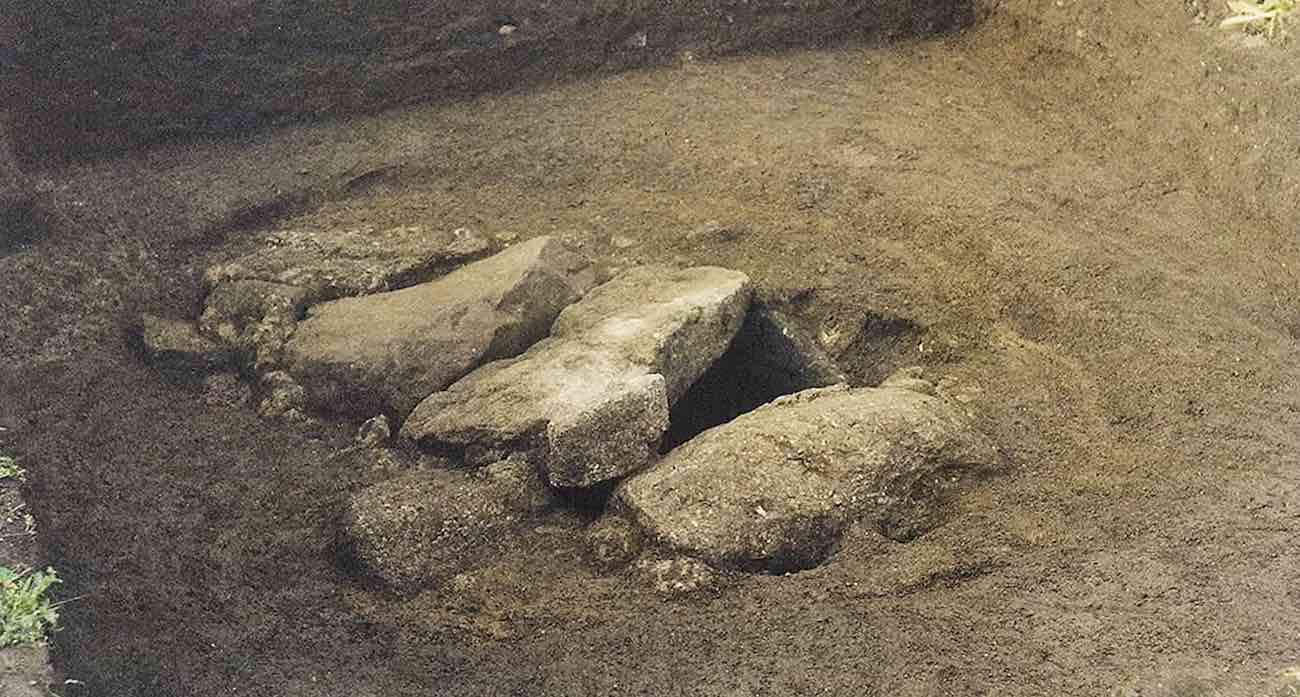
On one of the British isles of Scilly, the grave of an unknown warrior buried with a sword and mirror had perplexed archeologists for years. Now, thanks to new techniques the interred individual’s identity is finally revealed.
She was an Iron Age warrior, likely a raider—someone who specialized in surprise attacks to gain plunder from settlements on nearby islands in the years of the Roman Republic.
The grave one the islet of Bryher, part of the Scilly group, was discovered back in 1999, but due to the near-total deterioration of the bones within, the sex of the single buried individual was unknown.
Laid beside them were a quartet of objects that represented a riddle—a sword and shield on the one hand suggesting a male identity, and a bronze mirror and brooch decorated with a sun motif suggesting a female.
A new study led by scientists at Historic England have used faint traces of tooth enamel left over in the soil to detect the key XX chromosome that finally put the first riddle to rest.
“Tooth enamel is the hardest and most durable substance in the human body,” said Dr. Glendon Parker who was part of the research team, to the Guardian. “Our analysis involved extracting traces of proteins from tiny pieces of the surviving tooth enamel. This allowed us to calculate a 96% probability that the individual was female.”

Historic England points out that while the mirror is usually associated with female members of Iron Age British societies, it would serve the valuable military purposes of allowing members of raiding parties to communicate over distances with flashing, and of cleansing warriors upon their return since mirrors were believed to hold a connection with the supernatural world.
MORE ARCHEOLOGY DISCOVERIES: Dazzling Ancient Bronze Sword Found in Germany ‘Still Shines’ After 3,400 Years
“Although we can never know completely about the symbolism of objects found in graves, the combination of a sword and a mirror suggests this woman had high status within her community and may have played a commanding role in local warfare, organizing or leading raids on rival groups,” said Dr. Sarah Stark, Human Skeletal Biologist at Historic England.
“This could suggest that female involvement in raiding and other types of violence was more common in Iron Age society than we’ve previously thought, and it could have laid the foundations from which leaders like Boudicca would later emerge.”
MORE BRITISH HISTORY: Prehistoric ‘Axe Factory’ Found in Britain Triggers Search for More Artifacts
Boudicca was queen of the Iceni tribe of Britons during the furthest extent of the Roman Imperial conquests and led her people, or so Roman historians record, in a revolt that burned several cities and killed perhaps as many as 50,000 Romans after her kingdom was annexed by the empire.
The grave of Scilly was dated to 100—50 BCE, putting the warrior woman within at between 160 to 90 years before Boudicca’s bloody revolt.
SHARE This Fascinating And Long-Awaited Discovery With Your Friends…




















